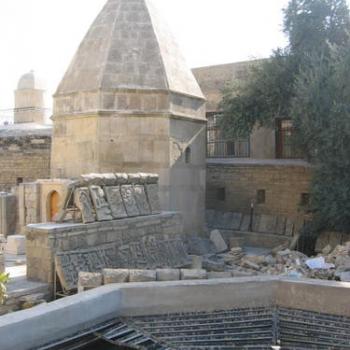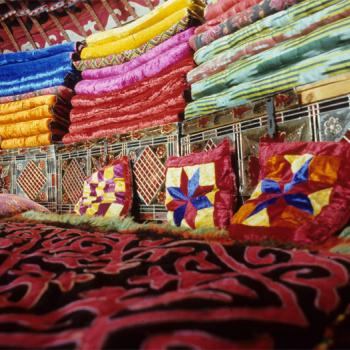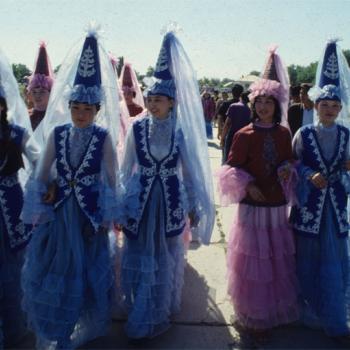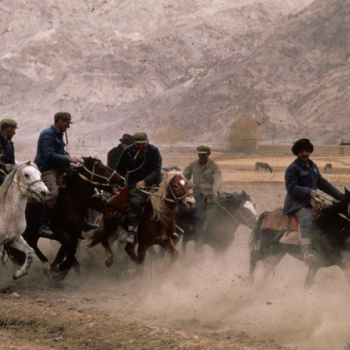Before the era of large-scale tourism, trade was one of the principal means by which people of different religions and cultures came into contact with each other. Although Buddhism is not traditionally a religion that actively seeks to ‘convert’ others, it nonetheless spread across South East Asia and became a widely followed religion in many countries in the Middle Ages, due largely to the voyages of Buddhist traders across Central Asia.
Ecological conditions governed the pattern of Mongol nomadic pastoral life. Competition for the control of resources, and the practicalities of life on the Mongolian Steppes determined the lifestyle, economy, and customs of nomadic tribes. Exchanges of culture also took place between communities. Tribes looked to their neighbors (both nomadic and sedentary) to find solutions to problems, to learn new farming techniques or crafts, and ultimately to exchange knowledge and goods.
Korean musical tradition has historically been influenced by cultures from all over Asia. Whilst China, as Korea’s immediate neighbour, played a particularly dominant role in early medieval musical forms, many types of foreign music were actively encouraged in Korea throughout the first millennium AD. Buddhist chant (pomp’ae) spread from India, whilst the traverse flute and the five-stringed lute can be traced back to northern Central Asia, to what is now Mongolia and Kazakhstan.
The nineteenth and twentieth centuries have witnessed a number of important developments in science and technology across Central Asia. Agricultural subsistence farming was traditionally the basis of national economies, and many areas continued to be nomadic. New educational programs and technological advances have raised literacy levels and encouraged settlement in urban communities, whilst the construction of scientific institutions and schools across this period has transformed traditional practices and social structures.
In the fifteenth to eighteenth centuries, there was a division in Central Asian societies between the theologians or mystics, and those who practiced ‘rational science’, which was perceived as a challenge to religious doctrine. Nonetheless, medical science, mathematics and astronomy all underwent significant developments in this period, nourished by the Persian and Indian scientific traditions. Moreover, technology flourished, with important advances being made in irrigation, water and wind power, craft technology, and artillery.









